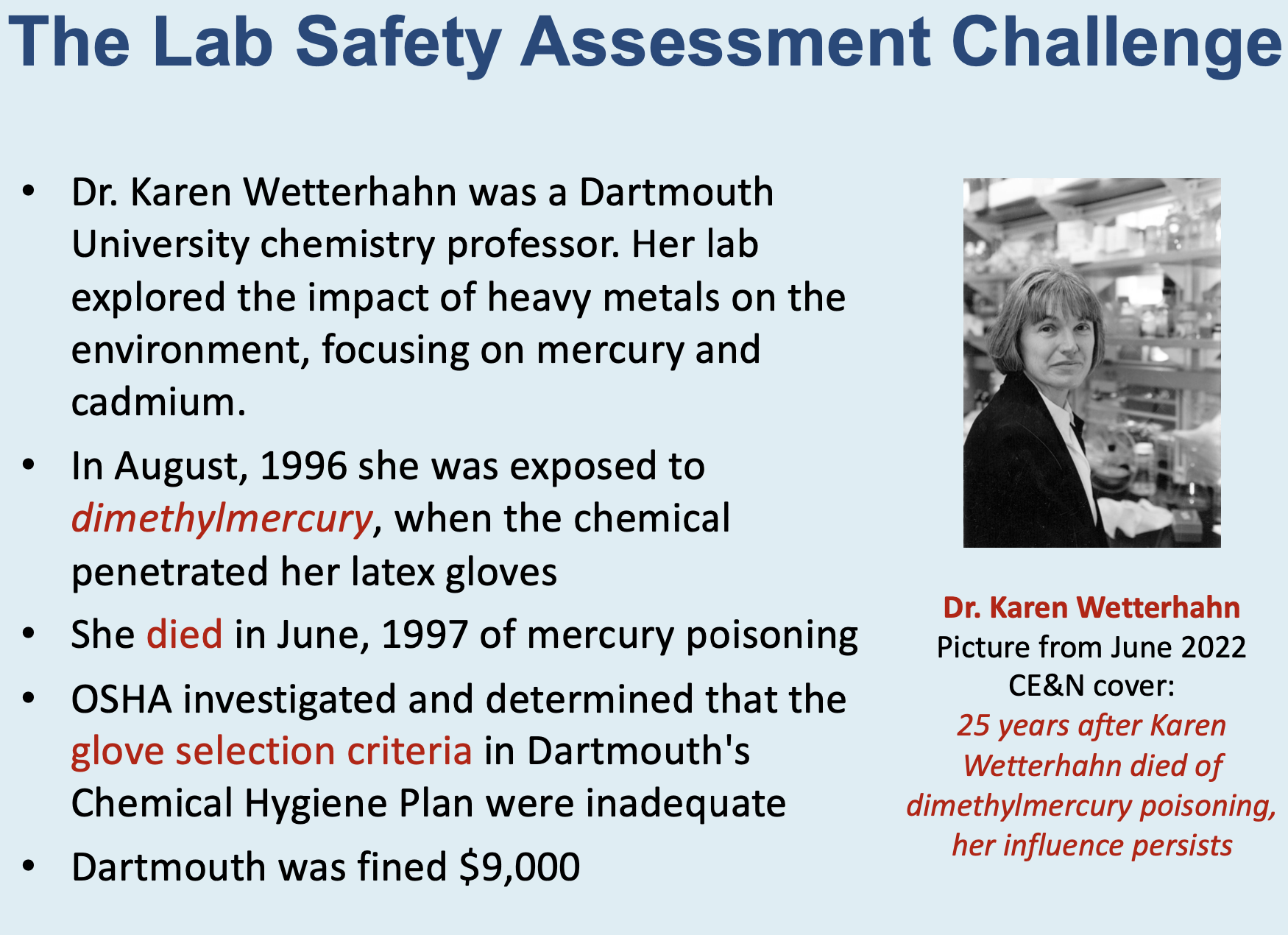On June 29, Ralph Stuart presented a webinar for Lab Manager magazine on the topic of Preventing and Managing the Most Likely Lab Accidents. This presentation highlighted a variety of ACS safety resources produced over the last 5 years and described how they can be used in the context of two historical laboratory incidents, specifically the death of Dr. Karen Wetterhahn.
A recorded version of the webinar is available for viewing on the Lab Manager website. A PDF version of the presentation is below, as well as the audience poll responses to the questions asked about their lab risk assessment processes.
This webinar was presented as part of the Divisions Innovative Project funded by the ACS to understand current practices in laboratory risk assessments and how ACS can support improving those practices. If you are interested in participating in this project, contact Ralph Stuart at membership@dchas.org
The Responses to Poll Questions were:
Which of these best describes how often your review your lab’s risks and safety practices?
| We have regular (weekly or monthly) safety discussions as refreshers for all lab staff | 46 | 31% |
| We rely on consistent use of general best lab safety practices | 45 | 31% |
| We review safety as new people are hired or procedures change | 26 | 18% |
| We review our SOPs for safety concerns annually | 30 | 20% |
| Total | 147 |
What part of your lab safety program do you find most challenging?
| Planning for Emergencies | 32 | 23% |
| Assessing Risks | 45 | 33% |
| Recognizing Hazards | 18 | 13% |
| Managing Safety to Minimize Risks | 43 | 33% |
| Total | 138 | 9 |
What is your primary approach to communicating your lab safety practices to people in your lab?
| We place notices and signs pointing out specific hazards in the lab | 51 | 36% |
| We rely on paper Standard Operating Procedures and Lab Guidance | 55 | 38% |
| We put alerts in an Electronic Lab Notebook system | 10 | 7% |
| We focus on word of mouth and chemical intuition | 16 | 11% |
| Total | 142 |
Who is involved in developing and reviewing your laboratory risk assessments?:
| The person who writes the SOP for procedure | 41 | 34% |
| Everyone who handles the chemicals involved in a SOP | 31 | 26% |
| Everyone in the lab, because they could be impacted by a safety incident even though they aren’t conducting the procedure involved | 41 | 34% |
| Our emergency responders who are expected to provide assistance in can of an incident | 6 | 5% |
| Total | 119 |

